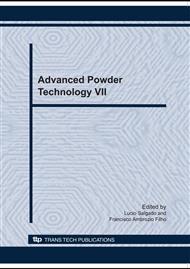p.813
p.819
p.826
p.832
p.837
p.844
p.848
p.854
p.860
Effect of the Pressure and Temperature Cycling in the Sintering of Cubic Boron Nitride Composites under HPHT Conditions
Abstract:
Owing to non-stable conditions generated during conventional HPHT sintering of cubic boron nitride (cBN) composites, it is not possible to predict both the yield and quality of the final product. Moreover, in the existing conventional technique, the particle size and amount of binding compounds that are associated with the composite may be responsible for defects and residual stress. In the present work, a novel technique of automatic cycling the pressure and the temperature was applied to the sintering of cBN composites bound with Ti2N and AI. This type of processing permitted to obtain a more uniform structure for the composites with ultra-fine layers of the binding compounds separating dispersed cBN grains. The technique improved the adhesion between the phases and contributed to decrease both the residual stresses and interfacial defects. As a consequence, the productivity related to machining of hard steels using inserts made of cycling HPHT processed cBN composites was increased by 170-180%.
Info:
Periodical:
Pages:
837-843
Citation:
Online since:
October 2010
Price:
Сopyright:
© 2010 Trans Tech Publications Ltd. All Rights Reserved
Share:
Citation:


